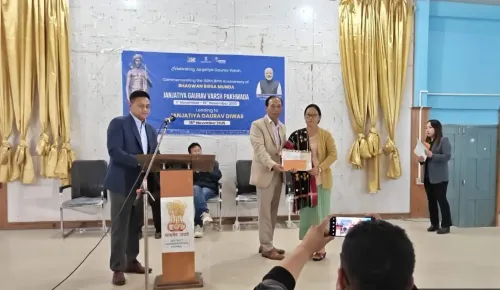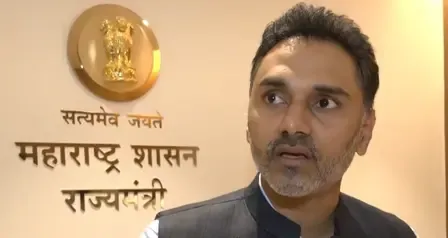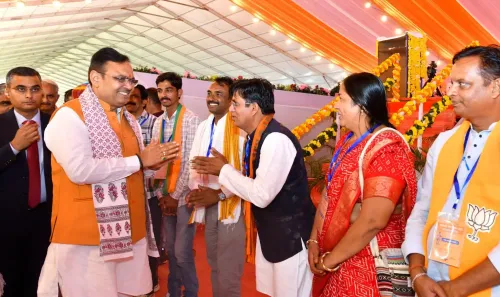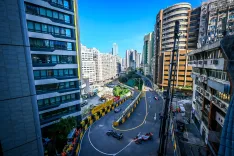What Did PM Modi Discover During His Visit to Surat's Bullet Train Corridor?
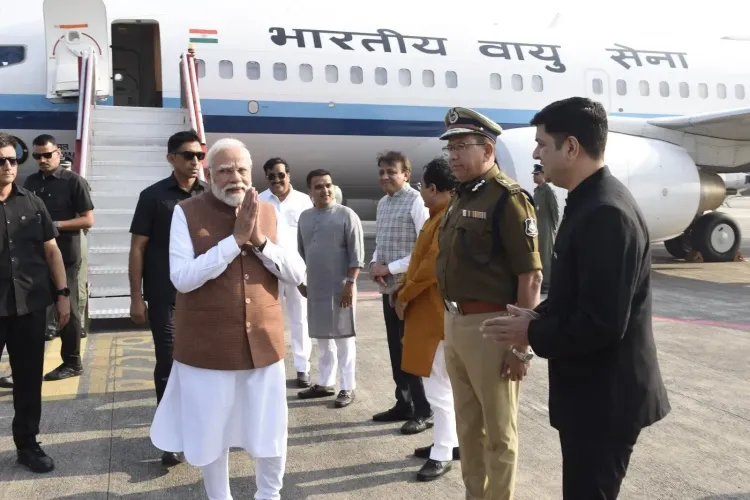
Synopsis
Key Takeaways
- Prime Minister Modi reviewed the Surat Bullet Train Station.
- The station design reflects the diamond industry.
- Travel time between Mumbai and Ahmedabad will be reduced to two hours.
- Over 85% of the corridor is on elevated structures.
- Significant progress has been made in civil works and bridge construction.
Surat, Nov 15 (NationPress) On Saturday, Prime Minister Narendra Modi conducted an in-depth assessment of the Mumbai–Ahmedabad High-Speed Rail (MAHSR) initiative during his trip to Gujarat, signifying a vital step in India’s advancement towards modern transportation infrastructure.
Upon arriving at Surat International Airport in the morning, the Prime Minister traveled by helicopter to Antroli, where the under-construction Surat Bullet Train Station — a centerpiece of the corridor — is taking shape.
During his visit, he evaluated the Surat station, a design influenced by the city's globally celebrated diamond industry.
This station, reaching a height of 26.3 meters and covering a built-up area of 58,352 sq.mt, features three levels: The ground floor accommodates parking and security checks, the concourse level offers lounges, restrooms, kiosks, and ticketing, while the platform level is designated for passenger boarding.
As the structural elements are completed, finishing touches such as interior design and station facilities are currently underway. Track-related tasks, including the construction of the RC track-bed and temporary track installations, have also been finalized.
The focus of the visit was to evaluate the development of India’s inaugural Bullet Train project, which stretches 508 km between Mumbai and Ahmedabad. Out of this, 352 km is situated within Gujarat and Dadra & Nagar Haveli, while 156 km is in Maharashtra.
This corridor will link significant cities such as Ahmedabad, Vadodara, Bharuch, Surat, Vapi, Thane, and Mumbai, with an anticipated reduction in travel time between the two metropolitan areas to approximately two hours, thereby greatly enhancing inter-city mobility.
As reported by the National High-Speed Rail Corporation Ltd. (NHSRCL), over 85% of the corridor — around 465 km — is being constructed on elevated viaducts, with 326 km already completed.
Progress on river bridges is also noteworthy, with 17 out of 25 bridges finished. The 47-km Surat–Bilimora segment is among the most developed stretches, where civil works and track-bed preparations have been fully executed.
The Prime Minister’s on-site evaluation underscores the Government’s commitment to accelerating large-scale, high-impact infrastructure projects. Once operational, the MAHSR corridor is set to revolutionize regional connectivity, spur economic growth, and position India among nations with advanced high-speed rail systems.

